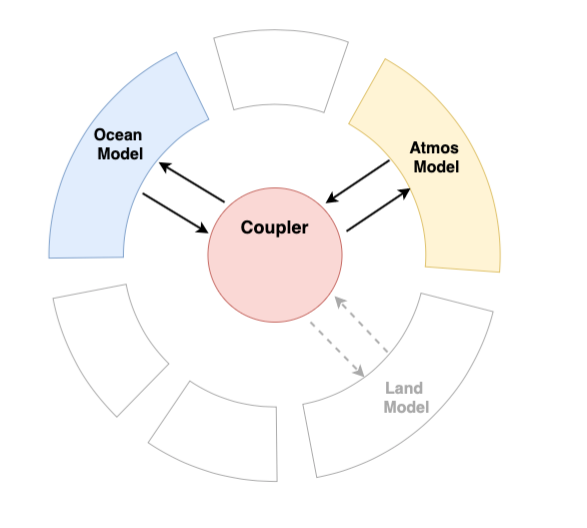
Projects
Climate Computing
Earth system model coupler
PI: Tapio Schneider, Divisions of Geological and Planetary Sciences (GPS) and Engineering and Applied
Sciences (EAS)
SASE: Ben Mackay, Scholar
Atmospheric CO2 concentrations now exceed 400 parts per million, a level last seen over 3 million years ago, when Earth was 2–3°C warmer and the sea level was 10–20 meters higher than today. Even with reduced CO2 emissions, Earth will continue to warm and the sea level will continue to rise, but it is unclear by how much. The uncertainties in global climate change projections have remained mostly unchanged since the 1960s, despite more than a 108 -fold increase in computer performance. These uncertainties impede society’s ability to assess environmental risks and take effective adaptation measures.
The Climate Modeling Alliance (CliMA) is building the first Earth system model (ESM) that automatically learns from diverse data sources to produce accurate climate predictions with quantified uncertainties. By fusing models and measurements through data assimilation and machine learning techniques, CliMA seeks to radically improve upon existing ESMs. In addition, CliMA is utilizing recent advances in computing technology to make models faster and their spatial grids finer, making it possible to better resolve important small-scale processes.
A core challenge of building an ESM is combining different physical model components into larger, more complex and more realistic model systems. This is necessary both within climate components — for example, the land system model (LSM) combines sub-models including soil, vegetation, snow, and carbon — and between climate components to unify the ocean, atmosphere, and land models into a single climate system. The Schmidt Academy Scholar worked to build a coupler for the CliMA ESM. A coupler is a software layer that is responsible for data transfer between the models, organizes their execution sequence, and enables them to be run in parallel. A lightweight coupling interface was defined to enable coupling while maximizing code reuse, making it easy for scientists to mix and match models, in turn enabling faster scientific exploration. A coupler also gives models more flexibility; because components are separate pieces of code, they can implement their own time stepping schemes and use different Earth grid types. The coupler then needs to be responsible for remapping data from one grid to another — conservative interpolation operators for both spherical and Cartesian geometries were implemented to enable this remapping for both full global models and smaller, high resolution large eddy simulations (LES).
The design of the coupler also informed the design of the LSM component, which combines terrestrial models of soil, vegetation, snow, the carbon cycle, and more. Modularity was stressed in the LSM, which enables scientists to develop these pieces independently and run each model in a “standalone” mode, allowing targeted science and debugging on a model-by-model basis. This modularity was balanced by a interface standardization so that there is a single workflow for building and running standalone or combined LSM models, minimizing the code that a new user needs to learn.
ClimaCoupler:
github,
docs
ClimaLSM:
github,
docs

The “hub and spoke” coupler model - Earth system components transfer data via the coupler, and can easily be added, removed, or replaced.